Abundance: common
What: young leaves, young stems, seeds
How: Young leaves/stems raw, stir-fried, steamed or boiled; seeds boiled like couscous or grind for flour
Where: yards, fields, disturbed areas, sunny
When: Early spring through early fall
Nutritional Value: high in vitamins A,C,K,B, minerals, and protein
Dangers: beware poisonous mimic Silverleaf Nightshade (Solanum elaeagnifolium)
Lamb's quarter seedling.
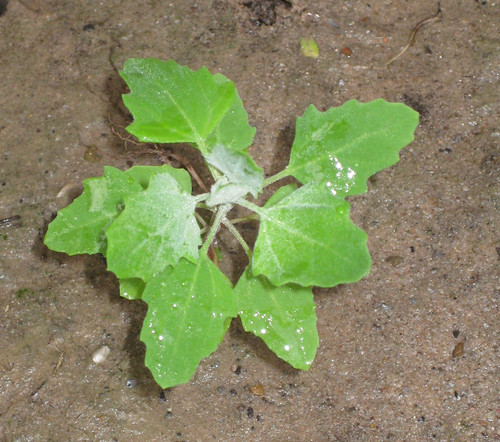
A group (flock?) of seedlings.

Larger lamb's quarter, perfect for eating.
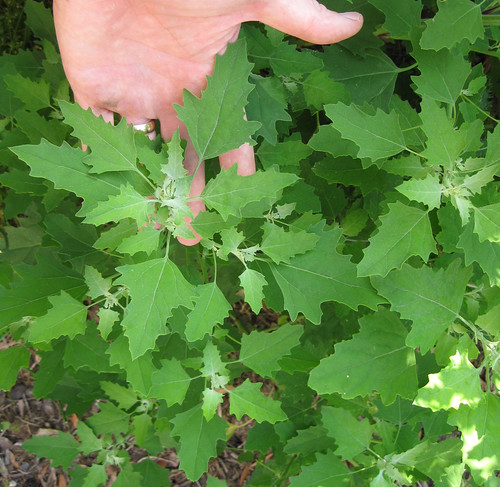
Patch of lamb's quarter.

Note the red/purple coloring at the stem-branch joints. To remember this I tell people to think of it as "purple armpit rashes".

Mature lamb's quarter (approximately 5-feet tall).

Close-up of leaf near top of the plant.

Close-up of topside of leaf from lower on a mature plant.
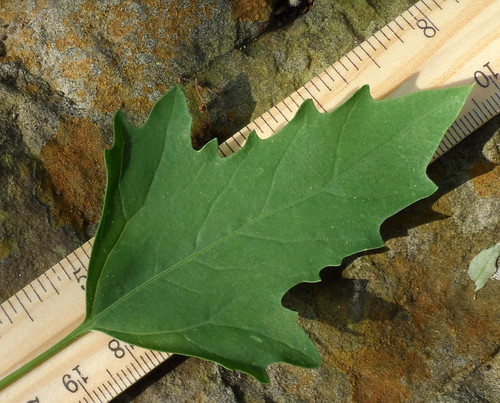
More mature leaves.
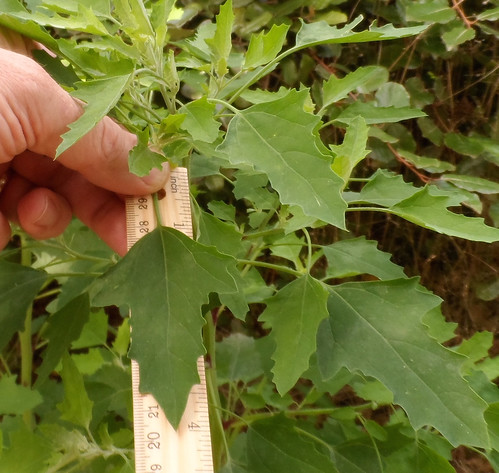
Close-up of underside of leaf from lower on a mature plant.
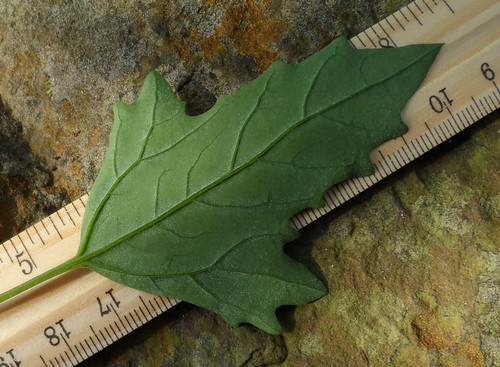
Close-up of lamb's quarter "flowers". Most people don't realize those bumps are flowers!
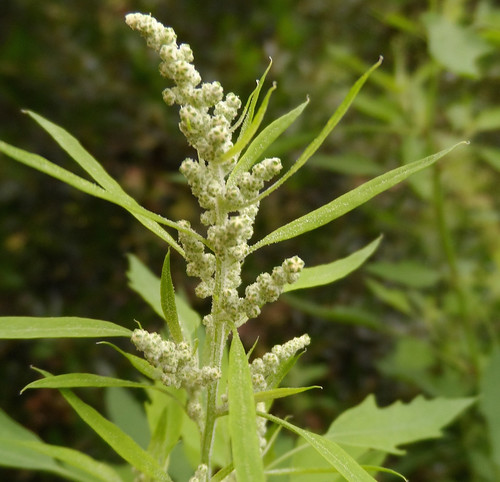
Lamb's Quarter going to seed.
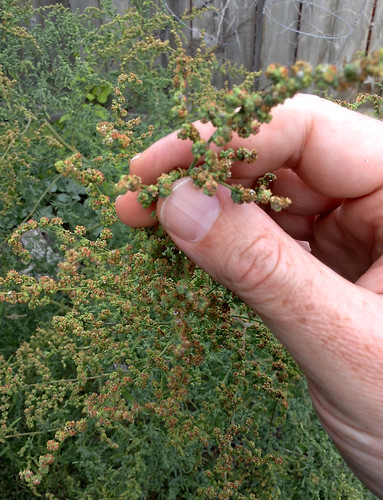
Texas distribution, attributed to U. S. Department of Agriculture. The marked counties are guidelines only. Plants may appear in other counties, especially if used in landscaping.

North American distribution, attributed to U. S. Department of Agriculture.
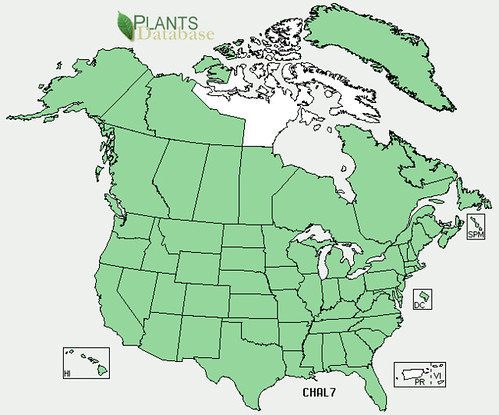
This common weed can grows all summer long reaching a height of 5' or taller. The small, soft (almost velvety) leaves and tender stems at the growing tip of each branch are best for eating and can be harvested from spring until killed by winter frost. Seeds are harvested in late fall to early winter. It is a very nutritious plant, higher in protein, vitamins, and minerals than spinach. The mild flavor of the leaves makes them excellent for cutting the bitterness of other wild greens but they taste better cooked than raw.
Crushing a leaf releases a very distinctive, somewhat musky scent. This smell was once described to me by an old-timer as "The smell of a good night in a bad house." Anyway, once you smell it you'll never forget it.
Lamb's quarter leaves can be frozen for later use. Blanch the leaves by dipping them in boiling water for one minute then quickly cool them off in ice water. Shake them dry, seal them in a freezer bag with all the air pressed out or use a vacuum sealer, then place them in the freezer. To use simply defrost and add them in to whatever you are cooking of a burst of summer nutrition!
This is a good companion crop to grow in your garden as many insects prefer to eat the leaves of lamb's quarters over the leaves of common vegetables. It sprouts very readily from seeds.
TOXIC MIMIC
The leaves of Silverleaf Nightshade (Solanum elaeagnifolium) have a similar shape to those of Lamb's Quarter but the differences between the two are very easy to spot:
1. Silverleaf Nightsade stems have thorns, lack the purple color at joints, and "kink" quit a bit at each leaf junction. Lamb's Quarter stems have no thorns, have the purple "armpit rash", and curve smoothly but very little at each leaf/stem joint.
2. Silverleaf Nightshade flowers are big and purple. Lamb's Quarter flowers are almost unnoticeable.
3. Silverleaf Nightshade produces round, hanging fruit which starts out striped green and eventually turns yellow/orange. Lamb's Quarter produces tiny seeds.
Silverleaf Nightshade leaves (POISONOUS)
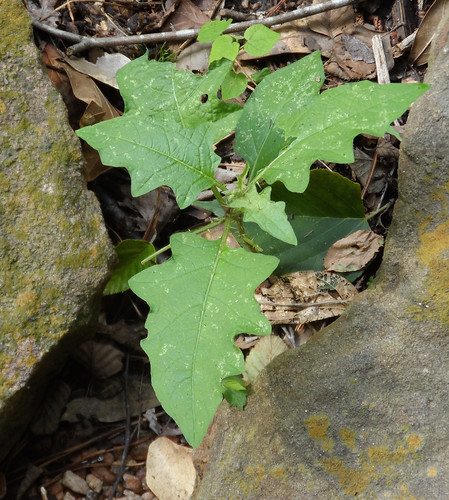
Silverleaf Nightshade flower (POISONOUS)
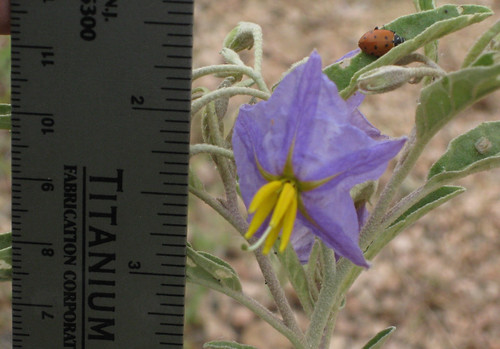
Immature Silverleaf Nightshade fruit (POISONOUS)
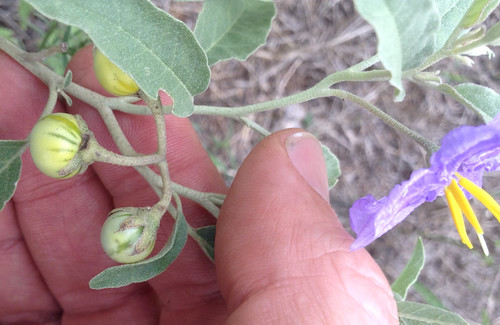
Mature Silverleaf Nightshade fruit (POISONOUS)
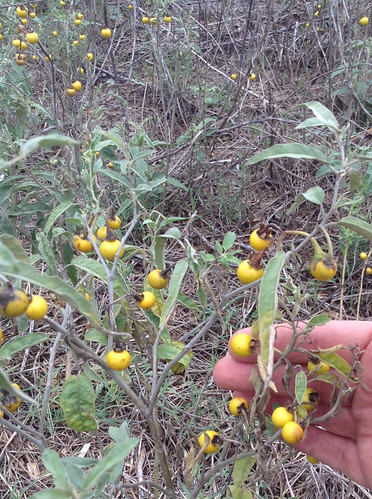
Buy my book! Outdoor Adventure Guides Foraging covers 70 of North America's tastiest and easy to find wild edibles shown with the same big pictures as here on the Foraging Texas website.

